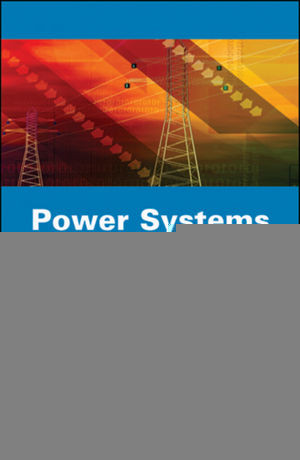

Most ebook files are in PDF format, so you can easily read them using various software such as Foxit Reader or directly on the Google Chrome browser.
Some ebook files are released by publishers in other formats such as .awz, .mobi, .epub, .fb2, etc. You may need to install specific software to read these formats on mobile/PC, such as Calibre.
Please read the tutorial at this link: https://ebookbell.com/faq
We offer FREE conversion to the popular formats you request; however, this may take some time. Therefore, right after payment, please email us, and we will try to provide the service as quickly as possible.
For some exceptional file formats or broken links (if any), please refrain from opening any disputes. Instead, email us first, and we will try to assist within a maximum of 6 hours.
EbookBell Team

5.0
80 reviewsThe scope of this book is to provide fundamental concepts of the physics and operation of transmission and distribution lines, which is the content of Part 1, followed by the models and tools for the description and simulation of large electrical grids for steady state and transient operation. These advanced tools allow the physics and technology of power systems to be described and the algorithms of Ybus and Zbus matrices to be built for various studies such as short-circuit studies and load flow or transient phenomena analysis.
Part 3 deals with the new organization concepts in the frame of deregulated markets. In this part the restructuring of the power industry is presented where various actors interact together through market places or bilateral contracts. In addition, the operation of the power grids under this deregulated context is detailed and the relationships between power system operators and market actors (energy producers and providers, traders, etc.) is explained with several examples. The ancillary services, congestion management and grid access concepts are also described.
A large number of exercises and problems disseminated throughout the book with solutions at the end enable the reader to check his understanding of the content at any time.Content:
Chapter 1 The Two Paradigms of the World Electrical Power System (pages 1–16):
Chapter 2 Production of Electrical Energy (pages 17–20):
Chapter 3 General Information on Electrical Power Networks (pages 21–26):
Chapter 4 Network Architecture (pages 27–58):
Chapter 5 Operation of Electric Lines (pages 59–112):
Chapter 6 High Voltage Direct Current (HVDC) Transmission (pages 113–125):
Chapter 7 Three?Phase Transmission Lines (pages 127–148):
Chapter 8 Electrical Transients in Transmission (pages 149–172):
Chapter 9 Functions of Electrical Energy Systems (pages 173–182):
Chapter 10 Network Representation (pages 183–205):
Chapter 11 Formation of Network Matrices (pages 207–222):
Chapter 12 Load Flow Calculations (pages 223–248):
Chapter 13 Transient Analysis Methods (pages 249–269):
Chapter 14 Fault Current Calculations (pages 271–322):
Chapter 15 Stability Analysis of Power Systems (pages 323–354):
Chapter 16 Basic Electrical System (pages 355–390):
Chapter 17 Liberalization of Energy Markets (pages 391–418):
Chapter 18 Description and Models of Energy Markets (pages 419–441):
Chapter 19 Ancillary Services (pages 443–463):
Chapter 20 Available Transmission Capability (ATC) (pages 465–477):
Chapter 21 Congestion Management (pages 479–502):
Chapter 22 Network Access and Charges (pages 503–523):
Chapter 23 Exercise Solutions (pages 525–664):